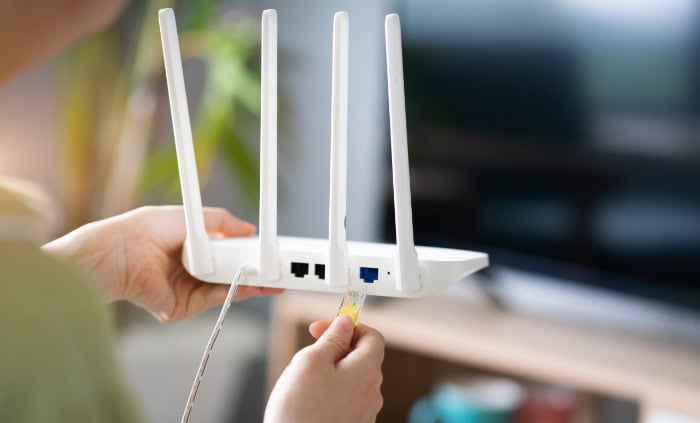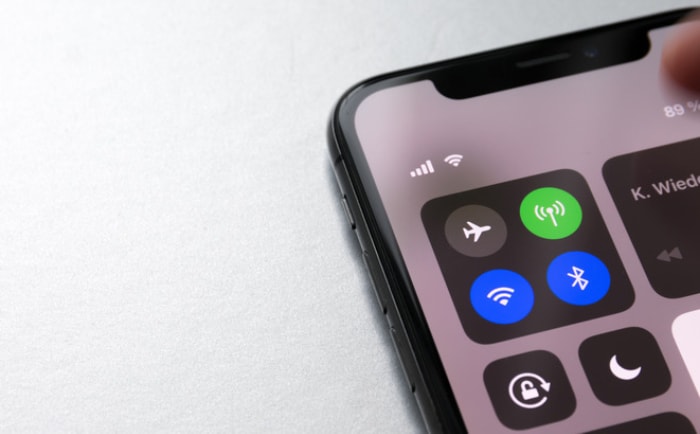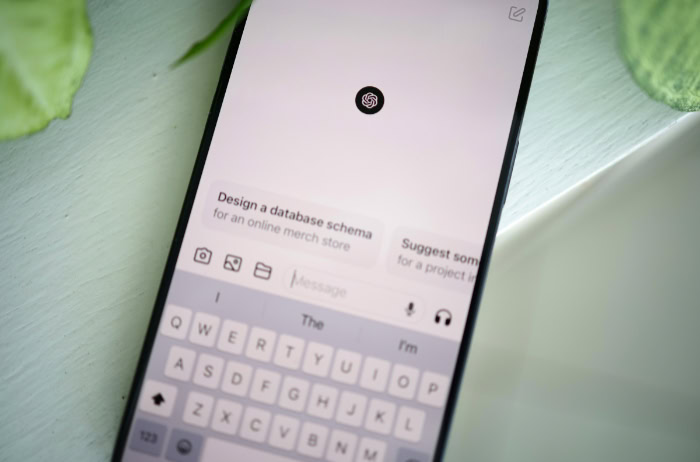What Is Wi-Fi Calling? Connect Easily When Signals Fail

Dropped calls and weak mobile signals don’t have to be a daily frustration anymore. Wi-Fi Calling steps in as a convenient way to keep conversations flowing, whether you’re deep inside a building, living in a rural area, or traveling abroad.
By routing your calls over a trusted Wi-Fi connection, this feature delivers clear voice quality and reliable reach, often without you even noticing a difference in your normal calling routine. As more people rely on flexible ways to stay in touch, Wi-Fi Calling is quietly transforming how we communicate, offering new flexibility for both personal life and business needs.
Understanding Wi-Fi Calling
Wi-Fi Calling is a feature that allows mobile devices to make voice and video calls using a Wi-Fi connection instead of relying purely on a cellular network. Unlike popular third-party applications such as WhatsApp or Skype, which require separate accounts and may use data plans differently, Wi-Fi Calling is managed directly by your mobile carrier.
Calls are made using your phone’s native dialer and contact list, and your usual phone number displays to the recipient. This means the process feels the same as a traditional call, but is powered by internet connectivity behind the scenes.
The carrier manages call quality, routing, and integration, ensuring that calls transition smoothly between Wi-Fi and cellular networks when needed, without requiring extra apps or complicated steps.
How It Works
Wi-Fi Calling operates using Voice over Internet Protocol, or VoIP. This technology converts your voice into small digital packets of data, which travel across your Wi-Fi network to your mobile carrier and out to the intended recipient.
Along the way, each packet is carefully managed to avoid delays or loss of audio quality, which is why a strong Wi-Fi connection is important for clear and reliable conversations.
Mobile carriers tie Wi-Fi Calling into their existing networks seamlessly. When you make a call, your device checks the strength of both Wi-Fi and cellular signals, then chooses the best option.
Your phone number appears the same as always, and incoming calls ring your device regardless of which network you are connected to. The carrier also manages important details like call routing, voicemail integration, and emergency services, providing a unified experience that feels natural to use.
Technical Requirements
Not every device or network can take advantage of Wi-Fi Calling. Modern smartphones typically support this feature, but it must also be enabled by your mobile carrier.
Both iOS and Android devices include Wi-Fi Calling in their operating systems, yet carriers may have specific requirements or restrictions around compatible models or account types. Some older phones, or phones purchased through unauthorized channels, might lack the necessary software or settings.
A reliable Wi-Fi connection is also essential. A speed of at least 1 Mbps (megabit per second) is generally recommended for high-quality voice or video calls, though faster and more stable connections ensure better results.
Public networks, like those in coffee shops or airports, may be less reliable due to congestion or security concerns. For optimal performance, a private, password-protected Wi-Fi network in your home or office is ideal. Carrier support is equally important, as some carriers do not offer Wi-Fi Calling in certain regions or for certain plans.
Key Benefits of Wi-Fi Calling

Wi-Fi Calling brings a fresh level of convenience and reliability to daily communication, making it easier for people to stay connected in situations where traditional cellular service might fail or prove costly. Its appeal lies not just in expanded coverage, but also in its practical advantages for everyday users and businesses alike.
Enhanced Connectivity
Signal dead zones can be incredibly frustrating, especially when they strike in homes with thick walls, underground offices, or remote areas far from cell towers. Wi-Fi Calling steps in to bridge those gaps, allowing you to make and receive calls wherever a reliable Wi-Fi connection is available.
Instead of relying solely on cell towers, your phone taps into your home or office router, creating a clear and stable connection. This means you can chat with friends, join business calls, or reach family even in places where cellular signals simply do not reach.
Battery life also gets a boost. Constantly searching for a weak cellular signal can drain your phone’s battery quickly, but connecting via Wi-Fi typically uses less power, especially in areas with spotty coverage.
Many users find they can go about their day with fewer interruptions and longer gaps between charging, all thanks to smoother, lower-energy connectivity.
Cost Efficiency
Travelers often face expensive roaming charges and unpredictable call costs when relying on traditional cellular networks outside their home country. Wi-Fi Calling sidesteps many of these costs by routing calls over the internet, letting you make calls to friends, family, or colleagues back home without racking up a hefty bill.
Even calls made domestically are usually treated the same, with most carriers including Wi-Fi calls as part of your existing minutes or data plan. There are usually no extra fees for connecting while on Wi-Fi inside your home country.
Families with loved ones abroad, or professionals who travel frequently for work, especially appreciate the savings. Instead of worrying about international call rates or purchasing separate plans, you just connect to Wi-Fi and call as you normally would.
This practical approach to connectivity can result in significant savings, particularly for those who spend a lot of time traveling or living away from home.
Seamless User Experience
Fumbling with apps, logging in, or switching interfaces can take the spontaneity out of staying in touch. Wi-Fi Calling eliminates that hassle by integrating directly with your phone’s standard dialer and messaging functions.
Your regular contacts, call history, and voicemail all remain accessible, and the process feels familiar. No extra downloads, passwords, or new habits are required.
For businesses and remote teams, Wi-Fi Calling provides a unified communication solution that works across offices, cafes, or home networks. Team members can join meetings, follow up with clients, and collaborate from almost anywhere without worrying about dropping calls due to poor cell coverage.
The technology supports a smooth workflow and helps remote workers stay productive and responsive, even if they are far from the nearest cell tower.
Limitations and Challenges

Wi-Fi Calling offers plenty of advantages, but it is not without its drawbacks. While the feature can bridge connectivity gaps and lower costs, certain hurdles can still impact performance and reliability.
Users should be aware of some important limitations, especially those related to network strength, emergency access, and device or carrier compatibility.
Network Dependency
Call quality with Wi-Fi Calling depends heavily on the strength and stability of your Wi-Fi connection. A fast, consistent network will usually deliver clear audio and uninterrupted conversations.
However, a weak or unstable connection can cause frustrating issues such as echoing, choppy audio, or dropped calls. In very busy households or offices where many devices compete for bandwidth, call performance may decrease during peak internet usage.
Connecting through public Wi-Fi adds another layer of complexity. Public networks, such as those in airports or coffee shops, are often less stable and may have many users sharing limited bandwidth.
Security concerns also come into play on open networks, since data is more vulnerable to interception. Making sensitive calls in these environments carries risks, and call quality may also be unpredictable if others are streaming video or downloading large files at the same time.
Emergency Call Constraints
Calling emergency services on Wi-Fi works differently than traditional cellular calls. The system often struggles to pinpoint your exact location, especially if you are using a Wi-Fi network not tied directly to your home address.
Some emergency calls may only provide a general area rather than the precise spot, potentially slowing down emergency response.
Policies and procedures for handling emergency calls over Wi-Fi also vary depending on your carrier. Some networks require you to register a physical address to help route emergency calls, but this address may not match your real-time location if you move around.
Travelers and people who regularly change Wi-Fi networks should be particularly mindful of these limitations, as help may be dispatched to an address that is not current if location accuracy is compromised.
Compatibility Issues
Not every smartphone supports Wi-Fi Calling, and even those that do require carrier approval and proper setup. Older devices might lack software updates or specific hardware needed to enable the feature.
Some phones purchased outside your carrier’s official channels or brought in from other countries may not work correctly, or may not allow activation at all.
Carrier policies are another obstacle. Some mobile providers only allow Wi-Fi Calling on specific plans, or only in certain regions.
International travelers might find that Wi-Fi Calling works at home, but not overseas, or vice versa. Rules about who can use the service and where it is available change from one provider to the next, creating confusion and occasional frustration for those hoping to rely on the feature everywhere they go.
Setting Up Wi-Fi Calling

Getting started with Wi-Fi Calling is usually straightforward, but a smooth setup depends on your device, carrier, and a few specific settings. Most modern smartphones make it easy to enable this feature, but it is important to ensure your carrier supports it and all permissions are granted.
By following a few simple steps, you can quickly take advantage of Wi-Fi Calling at home, in the office, or even while traveling.
Activation Steps
Activating Wi-Fi Calling starts with your device’s settings menu. On an iPhone, open the Settings app, tap Cellular, then select Wi-Fi Calling and switch the feature on.
Android users usually find the option under the Connections or Network & Internet section, often labeled as Wi-Fi Calling. Some Android phones may require you to search for the setting or look for it in the Calls section within the Phone app settings.
Carrier participation is essential. Your mobile provider must support Wi-Fi Calling for your specific device and plan.
After toggling the setting on, you might be prompted to agree to terms and conditions or confirm your emergency address, which helps first responders locate you if you ever place a 911 call over Wi-Fi. Once enabled, your phone should automatically switch to Wi-Fi Calling whenever it detects a suitable wireless network and cellular coverage is limited.
No separate login or app download is required, as everything works through your phone’s regular dialer.
Troubleshooting Common Issues
Sometimes Wi-Fi Calling refuses to activate or doesn’t perform as expected, but most issues have simple solutions. If the feature stays grayed out or won’t turn on, check first that your smartphone’s software is fully updated, and that your carrier settings are current.
Carriers often release small updates to improve compatibility, and missing these can block Wi-Fi Calling from working.
Connection problems, such as dropped calls or poor audio, usually trace back to weak or congested Wi-Fi networks. Make sure your wireless signal strength is strong, and try restarting both your phone and your Wi-Fi router.
If you’re on a public network, limited bandwidth or strict firewall settings might be the culprit. Switching to a more secure or private wireless network can significantly improve call quality.
If problems persist, removing and reinserting your SIM card, toggling Airplane Mode on and off, or briefly turning Wi-Fi Calling off and back on again can prompt your device to reconnect with the carrier’s network. Should all else fail, contacting your carrier’s customer support is the best next step, as there may be restrictions tied to your specific account or region.
Conclusion
Wi-Fi Calling has established itself as a valuable addition to modern communication, offering reliable voice and video connections where traditional cellular service struggles. By leveraging familiar devices and carrier networks, it brings greater flexibility to everyday life, bridging coverage gaps in rural areas, dense buildings, and even during international travel.
For personal use, Wi-Fi Calling makes it easier to stay in touch from virtually anywhere with a stable internet connection, often saving money and frustration in the process. On the business side, it supports remote teams and mobile professionals, helping them remain productive and responsive regardless of their physical location.
Despite some limitations, such as reliance on Wi-Fi quality, compatibility issues, and emergency service constraints, Wi-Fi Calling stands out as an accessible and practical solution in both personal and professional settings. For many, it represents a seamless way to enhance connectivity and ensure conversations continue, even when cellular signals fade.


